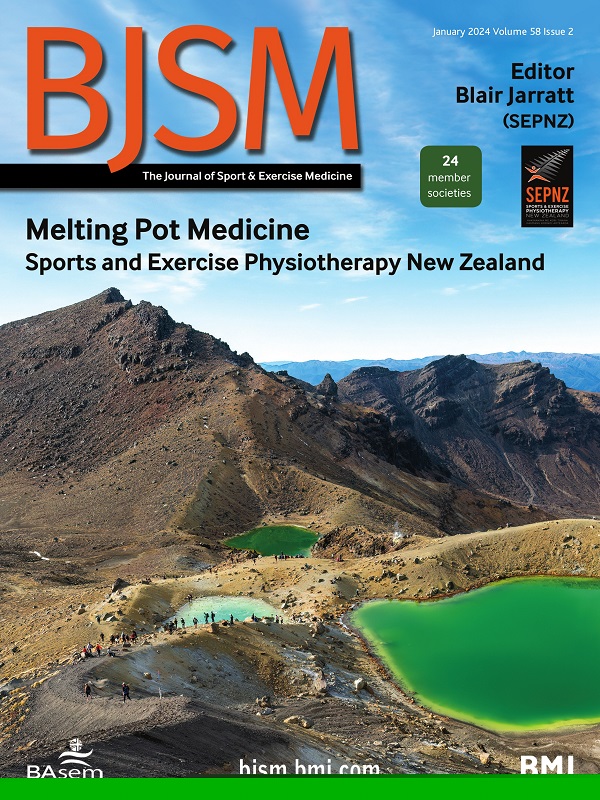来了又来:作为一名职业前芭蕾舞演员,在饮食失调和身体畸形中导航
IF 11.6
1区 医学
Q1 SPORT SCIENCES
引用次数: 0
摘要
在成长过程中,我与食物的关系从来都不复杂。我奶奶总是在晚餐时取笑我,说我吃了那么多,腿却空了;我总是精力充沛,从来坐不住。一位家庭朋友和前舞者推荐芭蕾舞作为舞蹈的基础动作语言,在10年内,我在16岁时获得了英国芭蕾舞学校的奖学金。职业芭蕾舞学校与我所知道的舞蹈训练世界发生了巨大的变化。我发现自己想家了,远离了我深爱的美国大家庭,而且是学校里17个年轻人中的一个,而不是学校里唯一的男孩。我努力适应我为了成功而给自己施加的压力。在学校里,从来没有人告诉我要注意自己的体重,但学校最后一年激烈的竞争环境为所有学生创造了一个敏感的环境。我有一个同学,大家都说她是我的双胞胎——我们都有高脚背、灵活的脚踝和过度伸展的膝盖的天赋。在去专业公司面试之前,我们的老师告诉他,以他目前的规模,他是找不到工作的——这纯粹是他的猜测,只是他的观点。既然大家都说我们是双胞胎,我就认为这意味着我也需要瘦一点。一开始我只是忽略了餐后对糖的渴望,但后来我逐渐养成了非常不健康的习惯,并开始与自己的身体形象进行心理斗争。早餐是一根香蕉和黑咖啡;午餐是半份火鸡三明治,夹在薄白面包上,黄瓜比火鸡多;放学后的点心更多的是咖啡和一小罐酸奶;晚餐总是100克煮得过熟的鸡肉或鱼肉,还有一份……本文章由计算机程序翻译,如有差异,请以英文原文为准。
There and back again: navigating disordered eating and body dysmorphia as a pre-professional ballet dancer
My relationship with food was never complicated growing up. My grandma always teased at dinners that I had a ‘hollow leg’ for all that I ate; I was always full of energy, and I could never sit still. A family friend and former dancer recommended ballet as the foundational movement language for dance, and within 10 years, I was awarded a scholarship to a ballet school in the UK at the age of 16. Vocational ballet school was a dramatic shift from the world of dance training I knew. I found myself homesick, far away from the big American family I loved, and one of 17 young men in the year, rather than the only boy in my local school. I struggled to adapt to the pressure I’d put on myself to be successful. At school, I was never personally told to watch my weight, but the heightened, competitive environment of the final year of school created a sensitive environment for all the students. I had a classmate who everyone said was my twin—we were both gifted with high insteps, flexible ankles and hyperextended knees. Before auditions for professional companies, our teacher told him he wouldn’t get a job at his present size—purely conjecture and just his opinion. Since everyone said we were twins, I took that to mean I needed to be thinner as well. What began as ignoring my post-meal sugar cravings started to snowball into very unhealthy habits and a mental battle with my body image. Breakfast was a banana and black coffee; lunch was half a turkey sandwich on thin white bread with more cucumber than turkey; an after-school snack was more coffee and a small pot of yoghurt; and dinner was always 100 g of overcooked chicken or fish, with a portion of …
求助全文
通过发布文献求助,成功后即可免费获取论文全文。
去求助
来源期刊
CiteScore
27.10
自引率
4.90%
发文量
217
审稿时长
3-8 weeks
期刊介绍:
The British Journal of Sports Medicine (BJSM) is a dynamic platform that presents groundbreaking research, thought-provoking reviews, and meaningful discussions on sport and exercise medicine. Our focus encompasses various clinically-relevant aspects such as physiotherapy, physical therapy, and rehabilitation. With an aim to foster innovation, education, and knowledge translation, we strive to bridge the gap between research and practical implementation in the field. Our multi-media approach, including web, print, video, and audio resources, along with our active presence on social media, connects a global community of healthcare professionals dedicated to treating active individuals.

 求助内容:
求助内容: 应助结果提醒方式:
应助结果提醒方式:


